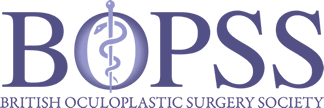| Title | Conjunctival Sparing Ptosis Correction by white-line advancement technique |
| Submitted by | Fatima Habroosh |
| Abstract Number | 113 |
| 19-162 | |
| Review Result | rapid fire presentation |
| Purpose | “White line” advancement technique is a procedure that spares the conjunctiva, muller muscle and tarsal plate. We hereby describe our technique of white line advancement posterior ptosis surgery and assess the efficacy and success rate of posterior approach white line advancement |
| Methods | Retrospective study, chart review of 48 patients from January 2014 to January 2019 who presented with ptosis and underwent surgical correction with white line advancement technique under local or general anaesthesia. All types of ptosis that were included has good levator function (>14mm). Success rate was defined as maintaining good, symmetrical eyelid position with inter-eyelid height asymmetry of ≤1 mm, and satisfactory eyelid contour 3 months postoperatively. The analysis was based on number of patients not eyelid. |
| Results | Total number of patient was 48, with 71 eyelids (23 bilateral). Female were more than males, 27 and 21 respectively. Average age was 47-year-old with range of 19 to 81. Eighty five percent of patients were having acquired aponeurotic blepharoptosis. Also, other types were included: acquired mechanical, anophthalmic socket, congenital ptosis. Congenital ptosis was defined based on patient history and all of them had good levator function (>12mm). The percentage of patient who had previous eyelid surgery was 14.5%, majority of whom ( 71% ) has previous blepharoptosis correction procedure. Concomitant other procedures included: blepharoplasty, brow ptosis repair, entropion repair and mass excision in 29.16% cases. Mild post-operative complications occurred in 14 patients, which are wound infection (1) suture granuloma (1), over correction (2), lagophthalmos (1), peaking (1) and hematoma (3). All resolved without the need for further surgical intervention. Seven patients had early recurrence and 3 has late recurrence of ptosis. The success rate was 80% with average follow up period 37.7 weeks (approximately 9 months) and range from 12 – 144 weeks… |
| Conclusion | The surgical method of white line advancement technique was described in details. The success rate of the procedure was approximately 80% in our data. This procedure is a promising technique in cosmetic and functional blepharoptosis correction. The post-operative complications were mild and manageable. The advantage of this procedure is to preserve the anatomy of the conjunctiva which has potential benefit in maintaining healthy ocular surface. Compared to the external approach ptosis surgery, the postoperative eyelid oedema and haematoma is minimal and the patient can resume work 2-3 days after the surgery compared to the external approach. In our hands the operating time is less than other types of ptosis surgeries. This technique can easily be used in patients who require deep sedation or general anaesthesia. Furthermore, only one suture is needed to close the skin wound. We find the skin crease incision is an excellent modification of the technique to reduce rate of postoperative infection and granuloma formation that we experienced in all of our first three cases. With good levator function of 12mm and better, a positive phenylephrine test is not needed to decide about the type of the surgery preoperatively. Further comparison study between different approaches is needed to prove the superiority of this procedure. |
Additional Authors
| Last name | Initials | City / Hospital | Department |
|---|---|---|---|
| Habroosh | F A | Sheikh Khalifa Medical City | Ophthalmology |
| Eatamadi | H E | Sheikh Khalifa Medical City | Ophthalmology |

